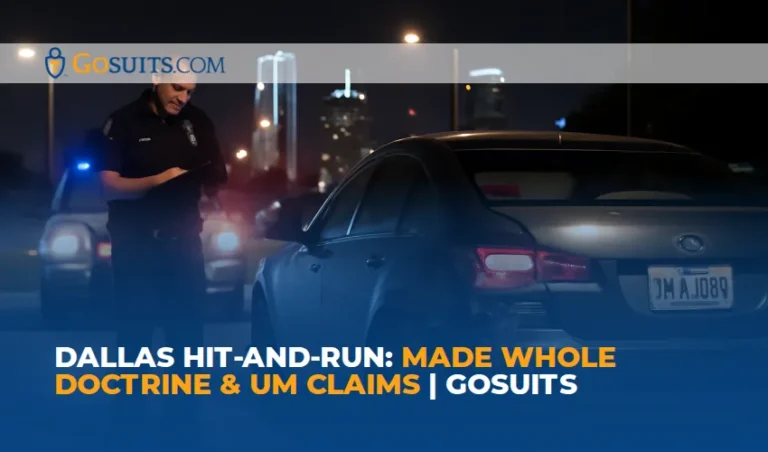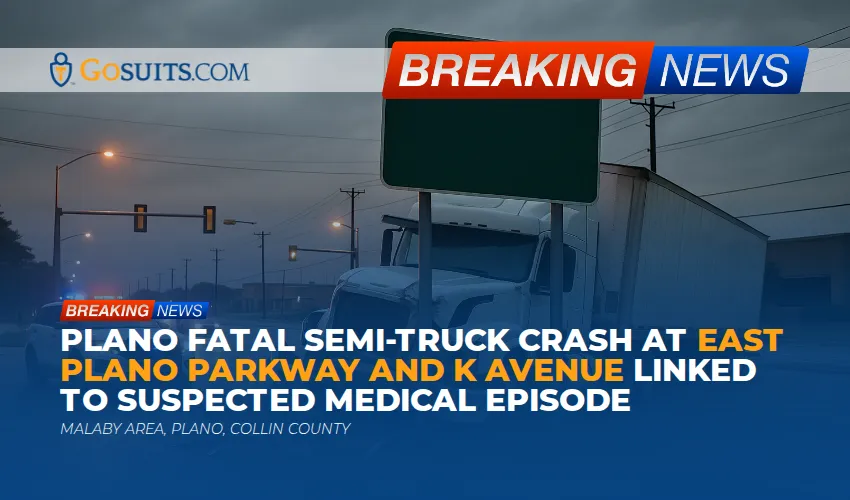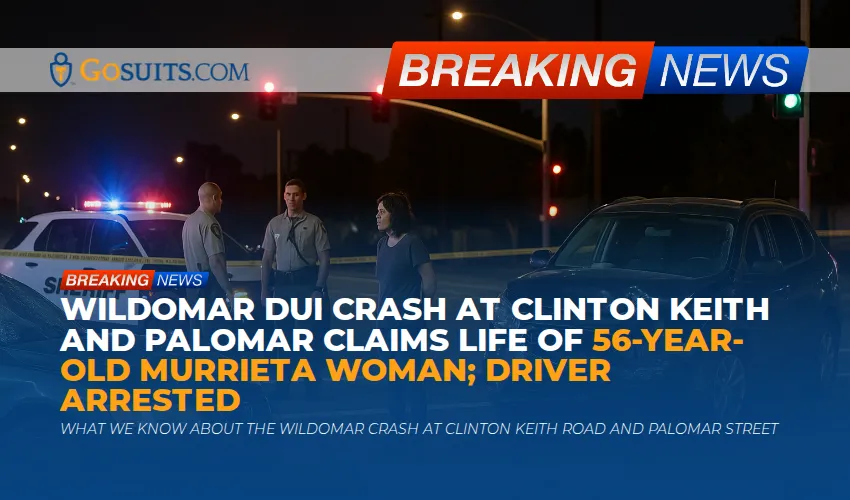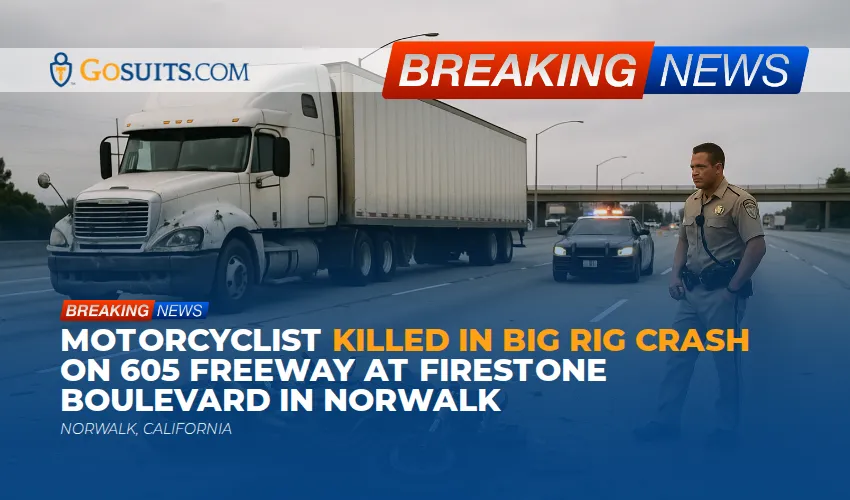- What is the made whole doctrine in Texas and why does it matter after a Dallas hit-and-run?
- How does uninsured motorist coverage work for Dallas hit-and-run crashes?
- Which Texas cases shape UM/UIM claims like yours, including Fortis v. Cantu and Brainard v. Trinity?
- When can an insurer seek subrogation or reimbursement in Texas, and does the made whole rule limit it?
- How do you prove liability and damages in a Dallas County hit-and-run UM claim?
- What deadlines apply to Dallas UM claims and civil lawsuits, and when do they start?
- How do policy limits, offsets, and stacking work for UM/UIM in North Texas?
- How are medical bills handled under Texas’s paid or incurred rule, and what about liens?
- Can you recover pain and suffering and property damage in a UM claim, and how is it proven?
- What steps should you take in Dallas right after a hit-and-run to protect a UM claim?
- How do settlements and subrogation get resolved so you are made whole?
- What defenses do insurers raise in Dallas UM hit-and-run claims, and how do you respond?
- How do Dallas courts handle UM lawsuits, arbitration, and attorney’s fees?
- How does the made whole doctrine interact with PIP and MedPay in Texas?
- How can GoSuits help with a Dallas hit-and-run, made whole, and UM claim?
- What resources and legal authorities can you review?
What is the made whole doctrine in Texas and why does it matter after a Dallas hit-and-run?
If you were hurt in a Dallas hit-and-run, the made whole doctrine can affect how much of your uninsured motorist claim you keep versus what an insurer or benefit plan can take back. In simple terms, the made whole doctrine is an equitable rule that says an insurer generally should not take reimbursement from your recovery until you are “made whole,” meaning your full loss is covered. You will see this concept when health insurance, MedPay, or auto carriers ask for reimbursement out of your settlement.
Texas recognizes the made whole doctrine, but Texas courts also hold that clear contract language can change the default rule. The Texas Supreme Court in Fortis v. Cantu explained that equitable made whole principles do not override an insurance policy’s plain subrogation or reimbursement terms. In other words, Texas starts with a made whole presumption, but policy language can give an insurer stronger reimbursement rights than the default rule. This matters in hit-and-run cases because multiple coverages may apply, and your net recovery depends on the order of payments, policy wording, and whether any liens or subrogation claims must be honored or can be negotiated down.
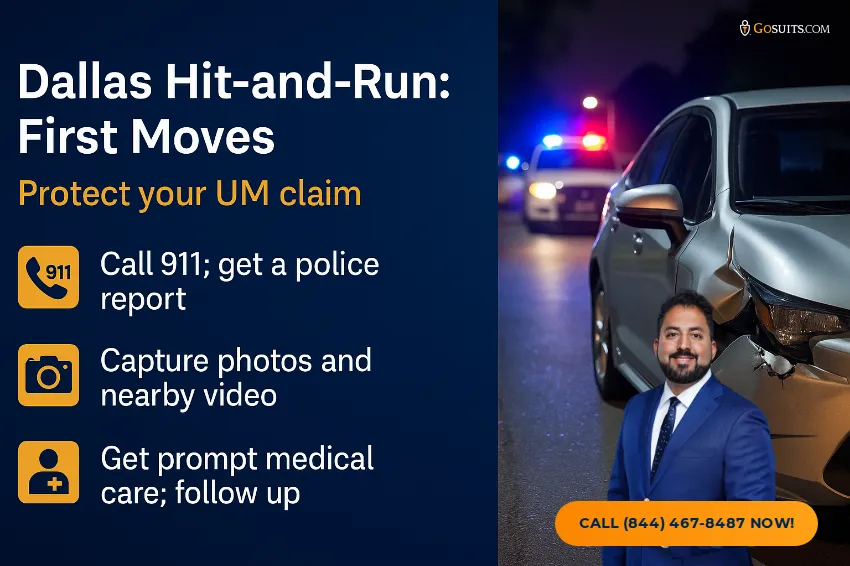
Two related concepts help frame the issue:
- Subrogation: When an insurer that pays your claim steps into your shoes to recover from the at-fault party or from your settlement. See the general definition at Cornell Law School’s Wex entry on subrogation.
- Made whole doctrine: The equitable rule that your loss should be fully covered before an insurer gets reimbursed out of your recovery. See Cornell Wex: Made whole doctrine.
In Dallas hit-and-run civil cases, these rules interact with Texas’s uninsured motorist statute and your individual policy. The core questions become: what does your UM policy say about subrogation and offsets, whether any health plan’s lien has legal priority, and whether you can negotiate reductions so that your final take-home amount is closer to being made whole.
How does uninsured motorist coverage work for Dallas hit-and-run crashes?
Uninsured motorist, often called UM, is designed to pay damages when the at-fault driver has no insurance or cannot be identified, such as in a hit-and-run. In Texas, insurers must offer UM/UIM coverage with every auto policy, and you can reject it only in writing. See the Texas Insurance Code’s UM/UIM provisions at Insurance Code Chapter 1952.
For hit-and-run in Dallas, a UM claim typically requires proof that an unknown driver caused the crash and that the incident meets your policy’s conditions. Many Texas policies include a physical contact requirement for phantom vehicles. Some carriers also require prompt notice and a police report within a specified period. If you are a pedestrian or cyclist struck by a fleeing driver, UM can still apply, subject to policy terms.
Key features under Texas law include:
- Offer and rejection: UM/UIM coverage must be offered, and a written rejection is required to waive it. See Tex. Ins. Code ch. 1952.
- Subrogation rights: A Texas UM or UIM insurer that pays benefits is typically subrogated to your rights against the at-fault driver. See Tex. Ins. Code § 1952.108 in Chapter 1952.
- Hit-and-run proof: Policies often require proof of a hit-and-run beyond just your statement, such as property damage showing contact or independent witness corroboration. Check your declarations page and policy conditions.
Importantly, Texas courts treat UM/UIM claims as contract-based claims against your own insurer, even though you must prove the other driver’s fault and your damages just like in a negligence lawsuit.
Which Texas cases shape UM/UIM claims like yours, including Fortis v. Cantu and Brainard v. Trinity?
Several Texas Supreme Court decisions affect Dallas UM/UIM claims, subrogation, and how quickly benefits are owed:
- Fortis Benefits v. Cantu, 234 S.W.3d 642 (Tex. 2007): The Court held that the equitable made whole doctrine does not trump clear contractual subrogation or reimbursement provisions. Practical effect, if your policy or benefit plan includes unambiguous repayment rights, the plan may recover even before you are fully compensated, subject to any statutory limitations.
- Brainard v. Trinity Universal Ins. Co., 216 S.W.3d 809 (Tex. 2006): The Court held a UIM insurer’s contractual duty to pay benefits is not triggered until the insured establishes the liability of the underinsured motorist and the amount of damages, typically by judgment or an agreement that binds the insurer. This ruling affects when benefits are “owed,” how attorney’s fees are handled, and the timing of interest and Prompt Payment issues.
Other later Texas decisions refine how declaratory judgment, presentment, and the Prompt Payment of Claims Act interact with UM/UIM claims. The big picture remains that you must prove the hit-and-run driver’s fault and your damages before your UM carrier has to pay. That proof can be established through litigation, arbitration, or sometimes a negotiated agreement that your insurer accepts as binding.
When can an insurer seek subrogation or reimbursement in Texas, and does the made whole rule limit it?
Subrogation and reimbursement come up in several ways in Dallas personal injury cases:
- UM/UIM subrogation: Under Texas statute and typical policy terms, once your UM carrier pays you, it can pursue the at-fault driver for the amounts it paid. See Tex. Ins. Code § 1952.108.
- Health plan or MedPay reimbursement: Health plans and optional MedPay often assert repayment rights against your settlement. Under Fortis v. Cantu, clear contract language can limit the made whole doctrine’s protection, although equitable arguments and statutory limits may still apply depending on the plan type.
- PIP benefits: Personal Injury Protection is different, because Texas law bars subrogation of PIP benefits. See Tex. Ins. Code § 1952.155.
Whether you are protected by the made whole doctrine depends on the source of the lien and the policy language. In many Dallas cases, negotiation focuses on reducing reimbursement claims so more of the settlement is available for your medical bills, lost income, and pain and suffering. Careful analysis is essential, because different rules apply to private health plans, governmental benefits, MedPay, and PIP.
How do you prove liability and damages in a Dallas County hit-and-run UM claim?
Even though a UM claim is against your own insurer, you still must prove that the unknown driver was negligent and caused your damages. Evidence that helps includes:
- Immediate reporting: Report the crash to 911 and request police response. Texas law requires drivers involved in injury crashes to stop and render aid. See Tex. Transp. Code § 550.021.
- Police and crash reports: The official crash report and any supplements can document scene details, witness names, and whether the other driver fled.
- Physical evidence: Vehicle damage indicating contact, debris patterns, paint transfer, and roadway markings help satisfy contact requirements in some policies.
- Witness statements and video: Independent witnesses and camera footage from businesses, residences, or traffic cameras can corroborate your account.
- Medical documentation: ER records, imaging, physician notes, and billing show injury causation, treatment, and costs under Texas’s paid or incurred rule. See Tex. Civ. Prac. & Rem. Code § 41.0105.
- Lost income proof: Employer wage verification, tax returns, and doctor restrictions substantiate wage loss and diminished earning capacity.
- Pain and suffering proof: Journals, family statements, and provider notes can help quantify non-economic harm, especially when there are fractures, surgeries, or lasting limitations.
A Dallas personal injury attorney can coordinate evidence collection, obtain surveillance or dashcam footage before it is overwritten, and work with reconstruction professionals where needed. Because your UM insurer can raise the same liability defenses an at-fault driver would, presenting a clear and well-documented case is vital.
What deadlines apply to Dallas UM claims and civil lawsuits, and when do they start?
In Texas civil cases, deadlines are strict and missing them can bar your claim:
- Negligence lawsuit against the at-fault driver: Two-year statute of limitations for personal injury. See Tex. Civ. Prac. & Rem. Code § 16.003.
- UM/UIM claim timing: A UM claim is contractual. Under Brainard, a UIM insurer’s duty to pay is not triggered until liability and damages are established, commonly by judgment or an agreement the insurer accepts. The limitations period for a suit against your UM/UIM insurer can be four years for breach of contract in Texas, but accrual and policy provisions can affect timing. Prompt notice and cooperation duties in your policy also matter.
- Policy notice and proof requirements: Many policies require you to report a hit-and-run to police promptly and notify the insurer within a short window. Failing to comply can lead to denial if the insurer proves prejudice.
The safest approach is to act quickly, gather evidence immediately, and get legal help early to calendar all applicable limitations, notice provisions, and proof requirements.
How do policy limits, offsets, and stacking work for UM/UIM in North Texas?
Policy limits set the maximum your insurer will pay. Many Dallas drivers carry UM/UIM limits that match their liability limits, sometimes 30,000 per person and 60,000 per crash, or higher amounts. Important issues include:
- Selection and rejection: Texas requires that UM/UIM be offered with each policy and that rejection be in writing. See Tex. Ins. Code ch. 1952.
- Offsets: Your policy may credit certain payments against your UM/UIM limit, such as PIP or MedPay, or amounts recovered from any known tortfeasor. The wording matters.
- Stacking: Texas generally limits stacking within one policy, though multiple policies can sometimes be involved if you are a named insured on different policies. Anti-stacking provisions are common and often enforceable under Texas law when clearly written.
- Hit-and-run specificity: For phantom drivers, some policies require physical contact or independent corroboration to access UM benefits. Understanding your declarations and endorsements is key.
In DFW, multi-vehicle households may have more than one policy in play, including a resident relative’s UM coverage. Layering coverage can be complex, and disagreements with carriers over stacking and offsets are common.
How are medical bills handled under Texas’s paid or incurred rule, and what about liens?
Texas allows recovery of medical expenses that are “actually paid or incurred,” which can limit the amounts presented to a jury or in negotiations. See Tex. Civ. Prac. & Rem. Code § 41.0105. Beyond that:
- Hospital and provider liens: Texas law allows certain providers to assert liens for accident-related treatment, typically attaching to a settlement. See Texas Property Code ch. 55.
- Health plan repayment: Private health plans, self-funded employer plans, and government benefits may assert reimbursement rights, though the exact rule depends on plan type and applicable statutes. The made whole doctrine can be limited by clear contract language in Texas as described in Fortis.
- Medicare and Medicaid considerations: If federal or state payers covered injury-related care, their interests must be addressed. For Medicare secondary payer rules, see Medicare as Secondary Payer.
In practice, Dallas injury settlements often require careful lien resolution to maximize your net recovery. That can include challenging unrelated charges, applying paid versus incurred limits, and negotiating reductions consistent with law and equity.
Can you recover pain and suffering and property damage in a UM claim, and how is it proven?
Yes. A UM claim can compensate you for the same categories of damages you could recover from the at-fault driver, including bodily injury, pain and suffering, lost wages, loss of earning capacity, and property damage. You must first prove the unknown driver’s negligence and that the negligence caused your injuries. Evidence to establish non-economic damages includes:
- Injury severity: Diagnostic imaging, surgical notes, and provider assessments connect symptoms to the crash.
- Functional limitations: Physical therapy notes, work restrictions, and activities of daily living limitations show impact on your life.
- Credible narratives: Contemporaneous statements, journals, and witness accounts help quantify pain, sleep disruption, anxiety, and loss of enjoyment.
For property damage, photographs, repair estimates, and diminished value appraisals can be used. Your policy may outline separate deductibles or exclusions, so review your declarations page.
What steps should you take in Dallas right after a hit-and-run to protect a UM claim?
After the shock of a hit-and-run in Dallas, focus on safety, documentation, and timely reporting. These steps help both your health and your UM claim:
- Call 911: Get medical help and a police response. Document any description of the fleeing vehicle, direction of travel, and witnesses.
- Gather evidence: Photograph vehicle damage, debris, skid marks, and your injuries. Ask nearby businesses for camera footage before it is overwritten.
- Seek prompt medical care: Immediate evaluation ties injuries to the crash. Follow-up care and compliance with medical advice are important for healing and for your claim.
- Notify your insurer quickly: Many policies require prompt notice and a police report for hit-and-run UM claims. Provide truthful, consistent information.
- Avoid recorded statements without counsel: You have a contractual duty to cooperate, but it is wise to have a Dallas attorney guide interactions to protect your rights.
How do settlements and subrogation get resolved so you are made whole?
In a typical Dallas hit-and-run UM claim, the settlement process involves negotiating with your UM carrier and then resolving any repayment claims from other insurers or providers. The goal is to maximize your net recovery within the policy limits and the law. Consider the following:

- Apply the made whole default where it fits: If a policy or plan is silent or ambiguous on reimbursement, the equitable made whole doctrine can support a reduction or avoidance of repayment claims.
- Read the policy language closely: Under Fortis, clear contract language controls many subrogation disputes in Texas. Ambiguities can be argued in favor of the insured.
- Sequence matters: PIP, MedPay, health insurance, and UM all interact. Texas law bars subrogation of PIP benefits, which can reduce downstream reimbursement pressure. See Tex. Ins. Code § 1952.155.
- Negotiate liens and bills: Provider charges must be reasonable and related. Paid or incurred limits may reduce the figure presented. Hospital and provider liens must comply with Property Code requirements. See Prop. Code ch. 55.
When there are serious injuries, combining careful policy analysis with disciplined lien resolution can substantially affect your take-home amount.
What defenses do insurers raise in Dallas UM hit-and-run claims, and how do you respond?
UM carriers in Dallas can raise defenses similar to those an at-fault driver would. Common issues include:
- No physical contact: If your policy requires contact for a phantom vehicle claim, the carrier may deny. Respond by gathering physical evidence and witness corroboration.
- Late notice or no police report: Carriers may assert prejudice. Provide proof of prompt reporting, explain any unavoidable delays, and document efforts to locate the driver.
- Comparative fault: Texas uses proportionate responsibility. Your damages can be reduced if you share fault, and barred if you are more than 50 percent responsible. Evidence, reconstruction, and witness testimony can address these claims.
- Causation disputes: Carriers may argue that injuries were pre-existing or unrelated. Consistent medical records and timelines help rebut.
- Policy exclusions and offsets: Clarify the policy, evaluate whether exclusions are enforceable, and challenge overbroad offsets.
How do Dallas courts handle UM lawsuits, arbitration, and attorney’s fees?
Many Texas UM policies have arbitration clauses, while others allow or require a civil lawsuit in Dallas County. Either way, Brainard makes clear that your UM carrier’s payment duty arises only after liability and damages are established. Attorney’s fees against your UM insurer are limited unless and until benefits are owed under the contract and statutory prerequisites are satisfied, which often requires a judgment or comparable binding determination.
If your case proceeds in Dallas County district or county courts, your attorney will file pleadings, conduct discovery, and, if needed, try the case to a jury to establish fault and damages. Arbitration timelines are often shorter but still require strong evidence and, frequently, expert-level analysis of crash dynamics and medical causation presented by qualified professionals.

How does the made whole doctrine interact with PIP and MedPay in Texas?
PIP and MedPay are optional first-party coverages that can help early in your case:
- PIP: Pays medical and a portion of lost income, usually without regard to fault, and Texas law prohibits subrogation of PIP benefits. See Tex. Ins. Code § 1952.155. Because no repayment is allowed, PIP can reduce pressure on your UM recovery.
- MedPay: Pays medical expenses regardless of fault, but many policies contain reimbursement provisions. The made whole doctrine is a default equitable principle, yet clear reimbursement language can control under Texas law.
Strategically coordinating PIP, MedPay, and UM can improve your overall outcome in Dallas hit-and-run cases, particularly while medical treatment is ongoing.
How can GoSuits help with a Dallas hit-and-run, made whole, and UM claim?
You do not have to navigate a Dallas hit-and-run UM claim alone. The process involves detailed proof of fault and injury, policy analysis, and negotiation of subrogation and liens. A free consultation with our personal injury team can give you clear next steps, help preserve evidence, and reduce the burden on your family while you focus on recovery.
What availability and communication do we offer?
- Available 24/7: You can reach us any time for an immediate free consultation, evenings and weekends included. We know hit-and-run cases cannot wait.
- Multilingual support: We offer multilingual customer service, with Spanish and Farsi speakers available around the clock. We communicate in the language you prefer, and we keep you updated in real time as your case progresses.
What are our fee policies and cost transparency?
- No win, No Attorney Fees: Learn how our contingency fee works at No win, No Attorney Fees. You pay no attorney fee unless we obtain a recovery.
- No hidden administrative fees: We clearly explain costs at the start. You see how case expenses are handled, and you receive itemized accounting at resolution.
How do our tools and case workflow help your claim?
- Proprietary case software: We built internal Personal Injury software to streamline investigation, medical record collection, demand preparation, negotiation, and, if needed, litigation and discovery. This allows faster information flow, better documentation, and timely responses to insurers.
- Evidence-first approach: We move quickly to preserve dashcam and business video, obtain CR-3 crash reports, and secure witness statements, which is critical in hit-and-run and phantom vehicle cases in Dallas.
What is our experience and track record?
- 30 years of combined experience: Our attorneys have handled thousands of civil injury cases involving UM, UIM, and complex liability disputes throughout Texas, California, and Illinois.
- Litigation depth: We have litigated more than 1,000 cases with settlement and verdict results published on our website. See examples at prior cases.
- Complex case capability: In product liability, 18-wheeler, brain injury, spinal injury, and other high-stakes matters, we retain qualified medical and industry professionals to establish causation and liability.
- Recognition: Our work has been acknowledged by independent organizations, including TopVerdict listings for number one settlements and verdicts across multiple U.S. counties, Top 100 Settlement in Texas, National Trial Lawyers Top 40 Under 40 for Sean Chalaki, recognition by Best Lawyers in 2023, 2024, and 2025, and Super Lawyers since 2021.
How are we involved in the community?
- Community engagement: We participate in local schools, chambers of commerce, and non-profit foundations throughout Dallas County and North Texas.
- Professional leadership: Our attorneys serve with trial lawyer organizations, including the Texas Trial Lawyers Association, and support consumer protection initiatives.
Where are we located and how do we start helping today?
- DFW coverage: We serve clients throughout Dallas, Fort Worth, Arlington, Irving, Plano, Garland, Mesquite, Richardson, Addison, Carrollton, Frisco, and McKinney. Our Texas team is available 24/7 and can meet by video, at a convenient Dallas meeting space, or at your home, hospital, or workplace.
- Immediate action: On day one, we open a claim, notify your UM insurer, request the police crash report, and preserve time-sensitive video. We coordinate medical care options that fit your situation and begin assembling the evidence needed to prove liability and your damages.
From preserving evidence in a Dallas hit-and-run to analyzing made whole, PIP, MedPay, and UM subrogation issues, our focus is on quality legal service rather than volume. We move your case forward with clear communication, full transparency on costs, and an approach tailored to your specific needs.
Resources and references
- Texas Insurance Code, UM/UIM: Chapter 1952, including subrogation and PIP provisions such as § 1952.155.
- Texas Transportation Code, duty to stop and render aid: § 550.021.
- Texas Civil Practice and Remedies Code: Two-year limitations for injury claims § 16.003, paid or incurred medical expenses § 41.0105.
- Texas Property Code, hospital and provider liens: Chapter 55.
- Cornell Law School Wex: Made whole doctrine, Subrogation.
- NHTSA research and data on traffic safety: NHTSA Research and Data for national context, including hit-and-run crash trends.
- Medicare Secondary Payer: Medicare as Secondary Payer.
- Texas courts rules and resources: Texas Court Rules and Standards, and Texas State Law Library court rules guide.
Notable Texas cases referenced include Fortis Benefits v. Cantu, 234 S.W.3d 642 (Tex. 2007), and Brainard v. Trinity Universal Ins. Co., 216 S.W.3d 809 (Tex. 2006). These decisions are commonly available on public legal research platforms such as Google Scholar.
Frequently asked local questions
Does UM cover a Dallas bicycle hit-and-run?
UM can apply when you are struck by a vehicle as a cyclist or pedestrian, subject to policy terms and proof requirements. Prompt reporting and evidence collection are critical.

Is there a deadline to report a hit-and-run to my insurer?
Many policies require immediate or prompt notice and a police report. Notify your carrier as soon as practicable and document all details.
Can I bring a lawsuit if my insurer refuses to pay?
Yes, UM is a contract claim. Under Brainard, you must establish the at-fault driver’s liability and your damages. Depending on your policy, arbitration may be required.
What if my health insurer wants reimbursement?
Whether and how much must be repaid depends on plan language, Texas law, and lien priority. Negotiation can substantially affect your net recovery.
